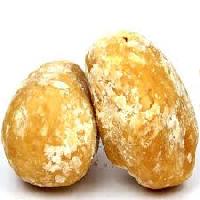From Sugarcane Product to Alternative Fuels: The Diverse Uses of Sugarcane
From Sugarcane Product to Alternative Fuels: The Diverse Uses of Sugarcane
Blog Article
The Journey of Sugarcane: From Harvest to Everyday Products
The journey of sugarcane is a complex procedure that begins with precise growing and finishes in a range of products that penetrate our daily lives. As we discover the different aspects of sugarcane's trip, its duty in sustainability and the more comprehensive effects for our atmosphere come right into sharper emphasis.
Growing of Sugarcane
The growing of sugarcane is a critical farming process that needs specific ecological problems and management methods. Optimal development happens in subtropical and exotic regions where temperature levels range in between 20 ° C and 32 ° C. Adequate rainfall or watering is vital, as sugarcane grows in damp dirt with well-drained conditions (sugarcane product). Dirt high quality dramatically influences yield; hence, farmers typically perform soil tests to identify nutrient needs
This technique promotes reliable collecting and optimizes sunshine direct exposure. Plant turning and intercropping are advised techniques to boost dirt fertility and minimize parasite infestations.
Timely application of these plant foods can substantially improve sugar returns. In general, effective sugarcane farming hinges on a combination of ecological stewardship, tactical preparation, and continuous monitoring methods.
Harvesting Techniques
Effective sugarcane cultivation finishes in the collecting phase, which is crucial for making the most of return and guaranteeing high quality. The timing of the harvest is vital; sugarcane is generally collected when sucrose levels peak, generally between 10 to 18 months after growing. This period differs based upon climate, dirt kind, and sugarcane variety.
Collecting techniques can be broadly classified into guidebook and mechanical approaches. Manual harvesting is labor-intensive, counting on competent workers who utilize machetes to reduce the stalks close to the ground. This technique enables selective harvesting, where only the ripest walking canes are selected, consequently boosting overall sugar material.
On the other hand, mechanical harvesting has actually gained popularity as a result of its efficiency and cost-effectiveness. Specialized harvesters furnished with reducing blades and conveyor systems can refine large areas rapidly, significantly decreasing labor expenses. This technique might lead to the addition of premature walking sticks and a possible decline in sugar top quality.

No matter the method used, ensuring that collected walking canes are moved rapidly to processing facilities is essential. Prompt taking care of decreases perishing and protects the stability of the sugarcane, setting the stage for optimum handling.
Processing Methods
Handling sugarcane includes a number of crucial steps that transform the collected stalks right into usable items, mostly sugar and molasses. The preliminary stage is cleaning the walking stick to eliminate dirt and particles, followed by the removal of juice with crushing or milling. This procedure usually utilizes heavy rollers that damage the walking stick fibers to launch the wonderful liquid had visit this site right here within.
When the juice is extracted, it goes through information, where impurities such as dirt particles and bagasse are eliminated. This is frequently attained by adding lime and warming the juice, enabling sedimentation. The clarified juice is then focused through dissipation, where water content is reduced, leading to a thick syrup.

Ultimately, the handling of sugarcane not just produces sugar and molasses however additionally prepares for numerous by-products, which will be checked out in succeeding discussions.
Products Derived From Sugarcane
Sugarcane is a flexible plant that yields a broad selection of products beyond check out here just sugar and molasses. Amongst the key by-products are ethanol and biofuels, which have gotten prestige as renewable energy sources. Ethanol, generated via the fermentation of sugarcane juice, offers as an alternative to nonrenewable fuel sources and is commonly blended with gasoline to create cleaner-burning fuels, minimizing greenhouse gas exhausts.
In addition, sugarcane is a substantial source of bagasse, the fibrous residue remaining after juice extraction. Bagasse is used in different applications, consisting of the manufacturing of paper, eco-friendly product packaging, and as a biomass gas for power generation. Its usage not just minimizes waste yet additionally boosts the sustainability of sugarcane handling.
Additionally, sugarcane-derived products reach the food industry, where it offers as an all-natural flavoring agent and sugar in numerous culinary applications. In the realm of cosmetics, sugarcane extracts are incorporated right into skin care products due to their all-natural exfoliating buildings.
Ecological Effect and Sustainability
The growing and handling of sugarcane have substantial ramifications for environmental sustainability. This crop requires significant water sources, frequently leading to exhaustion of local water products and influencing surrounding ecological communities. In addition, making use of plant foods and pesticides in sugarcane farming can result in dirt destruction and river pollution, posturing risks to biodiversity.

Sustainable sugarcane farming likewise promotes soil health and wellness through plant turning and lowered Recommended Site husbandry, enhancing carbon sequestration. The fostering of these practices not just supports environmental stability but additionally improves the durability of farming areas versus climate modification.
Verdict
In recap, the journey of sugarcane incorporates various stages from growing to handling, inevitably causing a broad variety of items. The significance of sugarcane prolongs beyond plain sweeteners, adding to sustainable power via ethanol manufacturing, lasting packaging via bagasse, and natural essences for cosmetics. This diverse plant plays a vital duty in both nutritional enrichment and ecological sustainability, highlighting its importance in contemporary agricultural and industrial practices.
Successful sugarcane cultivation culminates in the gathering stage, which is crucial for optimizing return and making certain top quality. The timing of the harvest is crucial; sugarcane is generally harvested when sucrose levels peak, usually between 10 to 18 months after planting.Handling sugarcane entails numerous essential actions that transform the harvested stalks right into functional products, largely sugar and molasses.Sugarcane is a flexible crop that produces a broad variety of items past simply sugar and molasses. In addition, the usage of plant foods and chemicals in sugarcane farming can result in soil destruction and river air pollution, posing risks to biodiversity.
Report this page